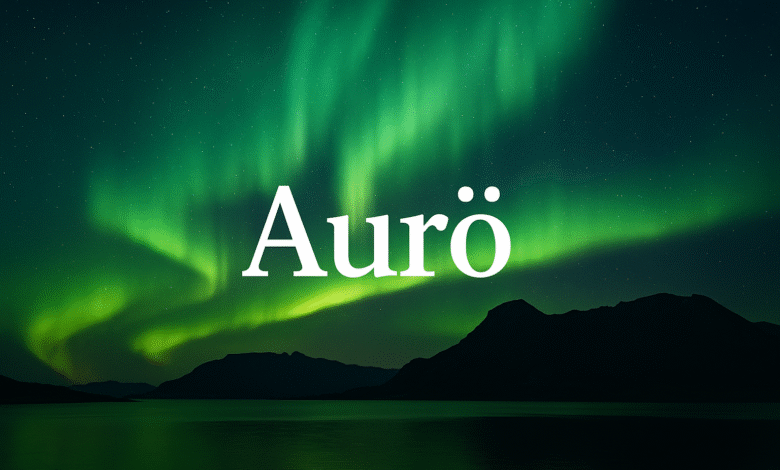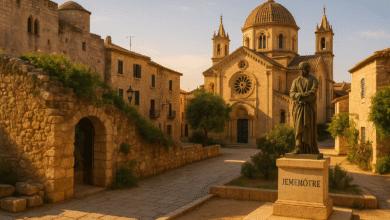Aurö: Exploring Its Deep Roots and Cultural Impact

Introduction
The term Aurö carries a timeless mystique that transcends language and culture. Often associated with wonder, exploration, and human curiosity, Aurö is more than just a historical or mythological concept—it represents a profound connection between nature, spirit, and civilization. Across centuries, scholars and storytellers have tried to understand its origins, symbolism, and enduring influence on humanity. This article takes you on a journey through the history, myths, scientific insights, and modern relevance of Aurö, revealing how it continues to inspire new generations.
Historical Background of Aurö
The history of Aurö stretches far back into ancient times, where its presence was first noted in early manuscripts and carvings. Archaeological findings reveal that Aurö played a significant role in the lives of early civilizations. Excavations near ancient trade routes suggest that it was once a cultural and economic hub, influencing social interaction and artistic development.
Over the centuries, Aurö has been mentioned in various historical accounts, often tied to great empires and their expansion. Historians believe that its story evolved alongside human civilization, representing a fusion of commerce, spirituality, and exploration. The rise and fall of powerful kingdoms saw Aurö adapt, shifting in meaning but never fading from collective memory. It became a symbol of endurance and human curiosity—a reflection of how societies interpret the world around them.
The Myths and Legends of Aurö
The myths surrounding Aurö are as fascinating as its history. Ancient stories depict Aurö as a celestial being that brings light to the darkest corners of existence. In many traditions, it is revered as a source of renewal and hope, closely tied to new beginnings and spiritual awakening.
Some legends describe Aurö as a guardian spirit, guiding seekers through uncertainty and protecting those in pursuit of wisdom. Communities performed sacred rituals to honor Aurö, gathering beneath the stars to celebrate harmony, unity, and enlightenment. These ceremonies strengthened social ties and fostered a shared identity among participants.
In art and literature, the mythology of Aurö continues to inspire. Poets, painters, and musicians reinterpret its symbolism to express human emotion, resilience, and transformation. The legends of Aurö thus bridge ancient spirituality with modern creativity, serving as timeless reminders of humanity’s quest for meaning.
Cultural Importance of Aurö Around the World
Throughout history, Aurö has held deep cultural significance across diverse societies. In Scandinavian traditions, Aurö symbolizes protection and perseverance. It is often depicted as a powerful guardian figure in folklore, embodying strength during hardship. The symbol of Aurö appears in traditional crafts and storytelling, passed down through generations as a token of courage and fortune.
In Eastern cultures, Aurö represents balance and harmony between humanity and nature. Philosophers have used it as a metaphor for unity and environmental consciousness. Ancient texts suggest that meditating upon the essence of Aurö leads to peace and clarity.
Among Indigenous peoples, Aurö is viewed as a sacred guide that connects the living to their ancestors. Ceremonies invoking Aurö honor the cycles of life, reinforcing a sense of belonging and respect for the natural world. Meanwhile, in modern urban societies, artists and thinkers have reinterpreted Aurö as a symbol of endurance, creativity, and transformation—a reflection of life’s constant evolution.
Scientific Studies and Discoveries on Aurö
Recent scientific research has provided fascinating insights into the mysteries of Aurö. Geologists have studied its unique landscape and mineral composition, uncovering patterns that suggest ancient human activity. Excavations in these regions have yielded tools, pottery, and artifacts dating back thousands of years—evidence of early civilizations that revered the area.
Botanists have identified plant species found only in the region associated with Aurö. These rare plants exhibit remarkable resilience and may hold potential for developing new medicinal compounds. Environmental scientists are also monitoring the area for changes in biodiversity, aiming to preserve its delicate ecosystem.
Through these studies, Aurö is gaining recognition not only for its historical importance but also for its environmental and scientific value. Researchers continue to explore how understanding Aurö could contribute to sustainable practices and conservation efforts.
Modern Applications and Influence of Aurö
In the modern world, Aurö has expanded beyond myth and history to influence innovation and design. Technologists are exploring how materials linked to Aurö can advance sustainable energy storage and eco-friendly construction. Its unique properties could revolutionize how energy is captured and preserved.
The healthcare field is also turning to Aurö for inspiration. Scientists are experimenting with its natural compounds in diagnostic imaging and treatment development, aiming to enhance medical precision. Meanwhile, designers and artists incorporate the aesthetic beauty of Aurö into contemporary creations, blending ancient symbolism with futuristic vision.
Environmentalists recognize the potential of Aurö in combating pollution. Studies indicate it may help break down toxic materials, making it a valuable resource in global sustainability initiatives. From art to science, Aurö continues to be a driving force for creativity and environmental awareness.
Controversies and Ongoing Debates
Despite its fame, Aurö remains a subject of debate among scholars and skeptics. Some researchers question whether Aurö truly exists in the way legends describe, suggesting it may be more symbolic than physical. They emphasize the need for concrete evidence to validate centuries-old claims.
Others argue that personal testimonies and cultural traditions offer valuable insights that science alone cannot dismiss. To them, Aurö represents both a real and metaphysical phenomenon—a bridge between tangible experience and spiritual belief.
This divide has fueled discussions in academic and philosophical circles. Regardless of one’s stance, the debate surrounding Aurö continues to inspire curiosity and exploration. The unresolved nature of its mystery may be what keeps it alive in modern consciousness.
Conclusion: The Timeless Legacy of Aurö
The story of Aurö is one of enduring fascination. Its origins, deeply rooted in ancient history and mythology, continue to echo through culture, science, and art. For some, Aurö is a historical relic; for others, it is a living symbol of resilience and discovery.
Whether viewed through a spiritual, cultural, or scientific lens, Aurö embodies humanity’s desire to connect with something greater than itself. The legends, research, and modern interpretations all contribute to its rich tapestry. As long as curiosity drives human progress, Aurö will remain a luminous symbol of unity between past, present, and future.
Frequently Asked Questions (FAQs)
1. What is Aurö?
Aurö refers to a historical and mythological concept associated with light, harmony, and exploration. It holds both cultural and scientific importance across civilizations.
2. Where did Aurö originate?
The origins of Aurö trace back to ancient societies where it appeared in early scripts and artifacts, symbolizing trade, spirituality, and renewal.
3. Is Aurö real or mythical?
Scholars remain divided. While some see Aurö as purely symbolic, others believe there is physical and cultural evidence supporting its existence.
4. How is Aurö used in modern times?
Today, Aurö influences art, sustainable technology, and environmental science. Its symbolism also continues to inspire creativity and philosophical thought.
5. Why is Aurö significant today?
Aurö represents humanity’s enduring curiosity and pursuit of meaning. Its cultural and scientific connections remind us of our shared heritage and ongoing quest for understanding.
asnews



